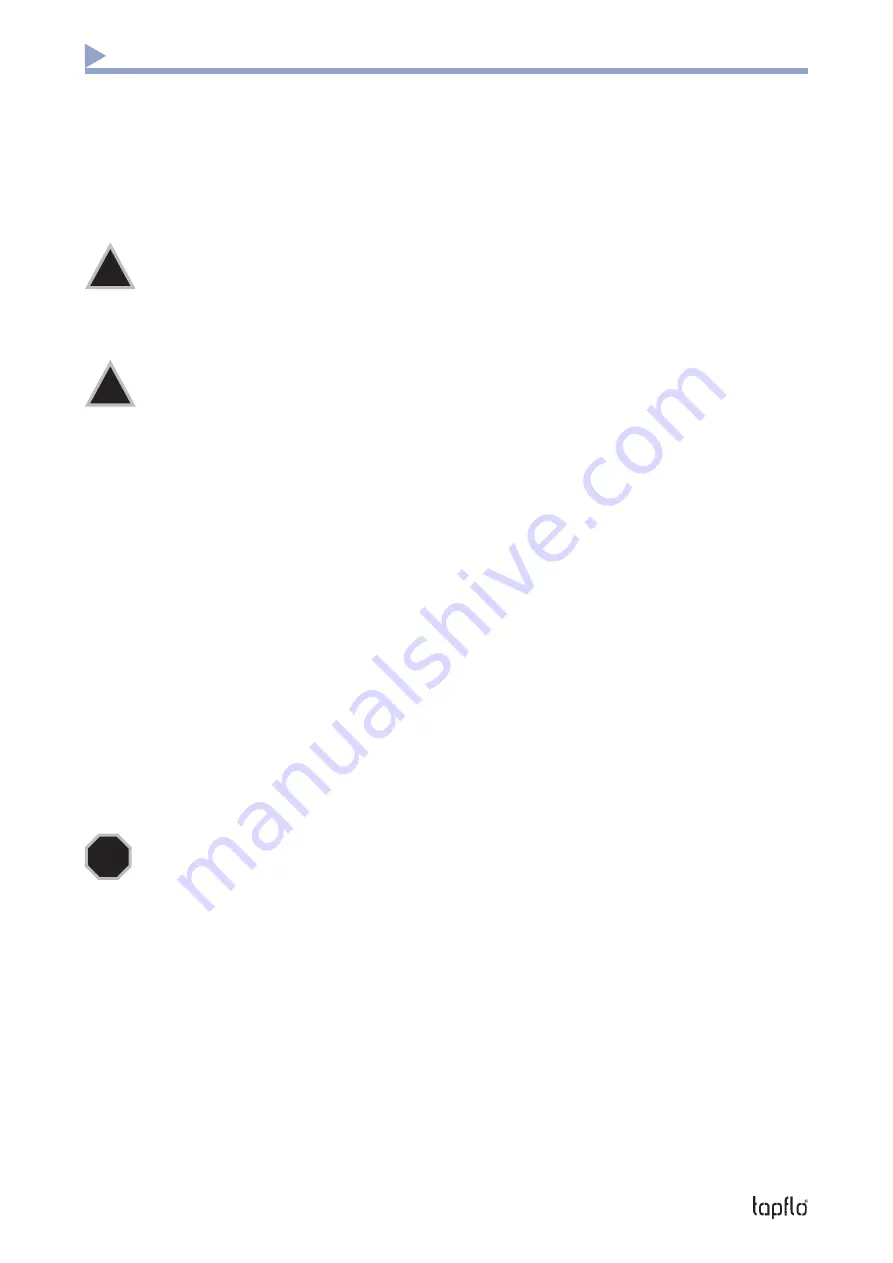
Instruction manual sanitary pumps T30-T425
5
1. INSTALLATION
1.1
Receiving inspection
Although precaution is taken by us when packing and shipping, we urge you to carefully check the
shipment on receipt. Make sure that all parts and accesories listed on the packing list are accounted
for. Immediately report any damage or shortage to the transport company and to us.
1.2
Storage
If the equipment is to be stored prior to installation, place it in a clean location. Do not remove the
protective covers from the suction, discharge and air connections which have been fastened to
keep pump internals free of debris. Clean the pump thoroughly before installation.
1.3
Foundation
The support of the pump is furnished with mounting holes. Fix the pump on a stable foundation,
which is able to absorb vibrations. It is essential for the operation of the pump to mount the pump
with the feet in a downward direction (see sketch in chapter 1.6).
1.4
Suction and discharge pipings
Suction and discharge piping should be fully supported and anchored near to but independent of
the pump. The piping to the pump should be a hose, to prevent undue stress and strain on the
pump connections and the pipings.
1.4.1
Connection of suction pipe
Remember that the suction pipe/connection is the most critical point, especially if the pump is
priming. Just a small leakage will dramatically reduce the suction capability of the pump. When
connecting the suction pipe, following is recommended.
1) For satisfactory operation, use reinforced hose (the suction power may otherwise shrink the
hose) or other flexibel piping. The internal diameter of the hose should be the same as on the
suction connection (at the bottom of the pump) to have best suction capability.
2) Make sure that the connection hose - pump is completely tight, otherwise the suction capability
will be reduced.
3) Always use as short suction pipe as possible. Avoid air pockets which can arise with long
pipings.
1.4.2
Connection of discharge pipe
For this connection it is only recommended a simple and positive flow connection. Use a hose or
flexible piping (minimum one meter) between the discharge connection and any rigid fixed piping.
Coil the hose at least one turn. All components (hose, pipe, valves etc) on the discharge piping
must be designed for minimum PN 10.
1.5
Air connection
Screw the air hose into the air intake on the center block of the pump with for example a bayonet
coupling. For best efficiency, use the same hose diameter as the internal diameter of the connection
on the air intake.
!
!
STOP
Summary of Contents for sanitary T Series
Page 21: ...Instruction manual sanitary pumps T30 T425 21 NOTES...
Page 22: ...NOTES...
Page 23: ...NOTES...






































